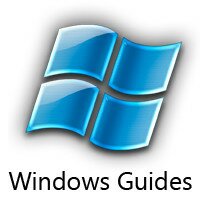Using Windows Readyboost is a great way to improve the performance of your computer when doing your day-to-day tasks.
In this guide, we will learn what Readyboost is, what its requirements are, and how to get it working for you.
What is Readyboost?
Readyboost uses a USB thumb drive to create an extra cache of the most commonly used data.
How Does it Work?
Solid state memory (what your USB drive uses) has excellent transfer speeds; therefore, it can be used to store and access data that is needed quickly.
Windows Vista Readyboost uses the USB thumb drive as an extra cache between the processor and the hard disk. Unlike RAM, the data is stored on your thumb drive and can be used next time you use your computer — a great time saver.
What are the Requirements?
For a USB thumb drive to be compatible, it needs to have a minimum of 256 MB free space. Most modern USB thumb drives will meet the space and speed requirements of Readyboost.
How Can I get it Working for Me?
First, put your USB thumb drive into a USB port on your computer. The following menu will appear.

Select Speed up my System with Windows Readyboost. The next screen will come up. Select Use this device and select how much of the drive you want to use for Readyboost. I recommend using a full USB drive. I would match the size of your drive to the amount of RAM you have in your laptop.

Press OK, your drive will be configured and you are good to go. Don’t expect miracles - but stick with it and your computer will begin to perform more efficiently.
Further Reading:
Tour Why Subscribe? Free Vista Books Toolbar




I always wondered what that was… I dont have a USB to try it
I use this already and it is so much quicker. Your instructions are easy to follow!
Speed up my system is not appearing
How big is your thumb drive?
What is the make and model number? Some drives are not compatible with readyboost.
Use This Model ! OCZ Rally2 Or OCZ ATV - 1GB Or More
JetFlashTS2GJFV30 USB DRIVE 2GB
Is not Working.
eBooster Ver 2.0.2 You Can Use It In Windows Xp & Vista
 (*)
(*)
This Tool Use Any Usb Drive & Any External Hard Drive For Ready Boost Win Xp & Vista. It’s Cool
Flash Ubs Drive Usb2 support write Speed 5mb (512mb) or More!
eBooster Download Link http://www.softpedia.com/progDownload/eBoostr-Download-88404.html
 I Have Serial
I Have Serial 
ebooster:
Vistas ReadyBoost benefits on your Windows XP machine;
Smart caches frequently used applications and files for maximum performance speed up;
Supports both USB and non-USB removable media devices, as well as additional hard disks;
Allows up to 4 devices for simultaneous smart caching;
Cache file size of up to 4GB on each device;
Compatible with all ReadyBoost ready devices.
The eBoostr trial version has no time expiration and you can evaluate it for as long as you wish. However the product demo is fully functional only for 4 hours after each system boot. This will allow you to evaluate the product and estimate how it performs on your configuration. Enjoy It:)
Hey I Have Srial